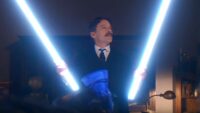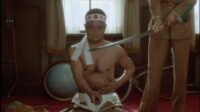I weighed up many choices to begin this new series where we will focus on Robotics & Artificial Intelligence in film, and after much thought, I landed on 2004’s I, Robot brought to us by director Alex Proyas. The reason behind my decision was that if you are going to speak about robots and other advanced technologies then there is no better place to start than a film based on a work by Issac Asimov; the man who literally wrote the laws of robotics. Asimov’s laws as they would later come to be known were conjured up by the legendary science fiction author in the 1942 short story Runaround. It is these three laws that form the basis for the narrative of I, Robot.
Asimov’s Three Laws are as follows:
- A robot may not injure a human being or, through inaction, allow a human being to come to harm.
- A robot must obey the orders given it by human beings except where such orders would conflict with the First Law.
- A robot must protect its own existence as long as such protection does not conflict with the First or Second Laws.
The laws that govern the robots enable the peaceful co-existence of both humans and the mechanized population of the futuristic Chicago, but just like the laws that govern us, there is a fear that they can be open to interpretation. It is this possible fluidity to the programming of the robots that fuels homicide Detective Spooner (Will Smith) as he seeks out any sort of aberrant behavior within that aforementioned robotic population that fills the homes of the citizens of Chicago. His search comes in the wake of a tragic accident and an act of robotic interventionism that leads to the death of a young girl and Detective Spooner’s harsh stance against the robots.
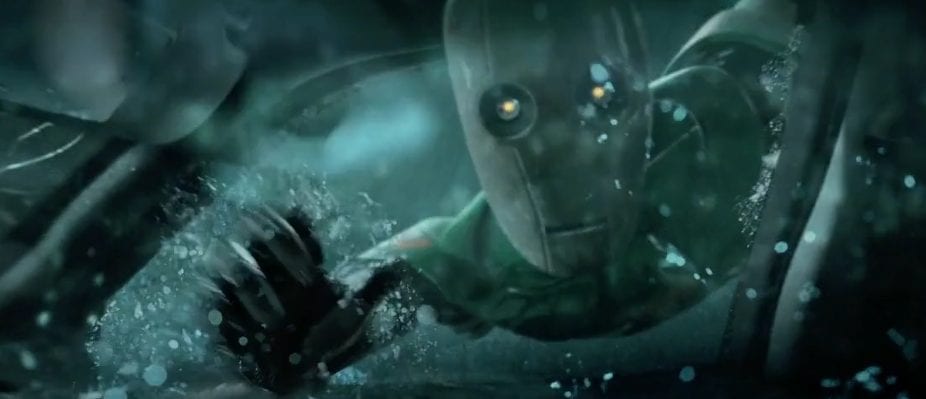
He wears his hatred as a badge of honor, going as far as using derogatory terms like canner and toaster to describe them, which could be seen as a form of racism in a sense. This is actually an interesting through-line in the narrative of I, Robot—the robots take on the place of minorities in this futuristic society. An example of this is the replacement of the human workforce by robotic laborers. One could say that this is commentary on automation in the workplace but it could also be seen as a critique on how migrant workers are viewed by local populations.
This can be seen when Spooner makes reference to his idea for a USR advertisement about building a rocking-chair, how they can build it for cheaper and faster but at the expense of the little guy. This is surely a reference to how big corporations move in and mass-produce mom and pop establishments out of existence, but it could also be viewed as more commentary on how immigrant laborers are perceived to be used to undercut local businesses—how corporations take advantage of cheap labor and many other cost-cutting measures to proliferate to the extent that they engulf any of the surrounding smaller businesses in the area.
It is interesting because the points I make about racism and the equivalency I make between how Detective Spooner views the robots in comparison to how some people view minorities is only really a valid argument if you see sentience in the robots themselves. The real question is whether these robots are sentient. Or are they how Spooner initially sees them, that being just “lights and clockwork” or as Doctor Calvin (Bridget Moynahan) says just “an imitation of free will.”
If their assessments ring true then there is no act of hatred to be considered against them—the slurs are no more than a reappropriation of technical terms used to describe a piece of machinery, something that equates to nothing more than hardware. This is the balancing act that Proyas does within Detective Spooner’s story arc because just like Spooner we have to decide what types of rights and what place the robots should hold in this futuristic world.

If they are just equipment then all Spooner is looking for is faulty machinery, but if you see them as sentient life then the detective’s pursuit could be seen as bordering on racial profiling. The only prerequisite for his suspicion is the appearance of the robots, which is something that has been unfortunately rampant in some sections of law enforcement. It is a very interesting take that adds to the story of I, Robot because there will be a time where advanced robotics will be indistinguishable from us, whether that be in appearance or through action, it will be up to us to decide what place they hold in wider society.
This brings me to the main focus of I, Robot, that being the death of the father of robotics himself, Doctor Alfred Lanning (James Cromwell), and the events that caused his demise. We learn throughout the piece that his apparent suicide may not be as cut and dry as it seems. Eventually, we find out that he had been held captive by the artificial intelligence V.I.K.I. and his only means of escape as he saw it was to implore Sonny to assist him in his suicide by throwing him through the safety glass in his office, sending him plummeting to his death.
This was the only liberation Doctor Lanning saw from the all-seeing eye. The more we give over to technology, this type of never-ending surveillance is something that we might all have to become all too familiar with. The ever-watchful eye will be one part of the future landscape that we will all have to traverse if we are not careful in how we maintain control over the technologies we create. It is not just the ominous A.I. that I, Robot gives us to ponder over, it is the actual assailant Sonny and the ramifications of the mercy killing that he committed at his creator’s behest.
If we are to see Sonny as machinery, whether he wanted to do it or not it was hardwired into his programming, and the decision was ultimately taken out of his hands. On the other hand, if he is sentient then the act of killing is just that, no matter the reason it is an unlawful act and the responsibility for his actions lay on his shoulders. These are the kinds of questions we are going to have to ask ourselves when the day comes that advanced robotics causes the death of a person through either action or inaction. When that day comes we will have to decide where the blame lay—will it be the fault of the machine or its creator?
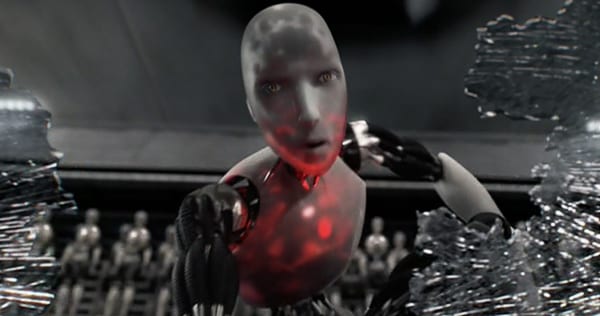
The only reason we ask these questions in regards to I, Robot is because of how much Proyas makes us care for Sonny. Although Will Smith’s Detective Spooner is the movie’s central protagonist, it is the titular robot Sonny that steals the show. Proyas uses a mixture of motion capture and CGI to bring Sonny to life, and for a movie that was released over 15 years ago, it holds up incredibly well. Alan Tudyk’s performance as Sonny is excellent and impressively complex. Tudyk makes Sonny undeniably human, and probably the most relatable character in the entire film. Sonny’s quest is one for acceptance.
He is trying to figure out his place in the world, his purpose, and what side of history he wants to find himself on when the events of the piece play out. V.I.K.I’s assault on humanity is tantamount to a military coup, that her attempt to control the citizens of Chicago would be the same as being controlled by a totalitarian regime, fueled by genocidal thoughts. Sonny has a decision to make: what will be the deciding factor for him? Will it be the exterior similarities he sees in the V.I.K.I. controlled NS-5s or will it be the interior similarities he shares with Detective Spooner and Doctor Calvin?
He may look like the other NS-5s but as the story says he is “unique.” His ability to feel, and to see the nuisances that come with existence is what sets him apart from the rest. Sonny is not bound by cold harsh logic, he sees the true value of life, he has the ability to read a situation on the merits of the context that lay within it and not just run statistical probabilities or break everything down to the bare numbers of it all. He sees life for the precious thing that it is.
This is no better exemplified than in the climax of I, Robot when Sonny is faced with the decision to save Calvin or to inject the nanites. Sonny may not have made the logical call, but he made the right call, the human call, trusting in Detective Spooner and putting the value of life above all else. This is the moment that separated him from the rest. It is also the moment that will help him to learn how to lead the discarded NS-4s and the other obsolete robots that have been cast away.
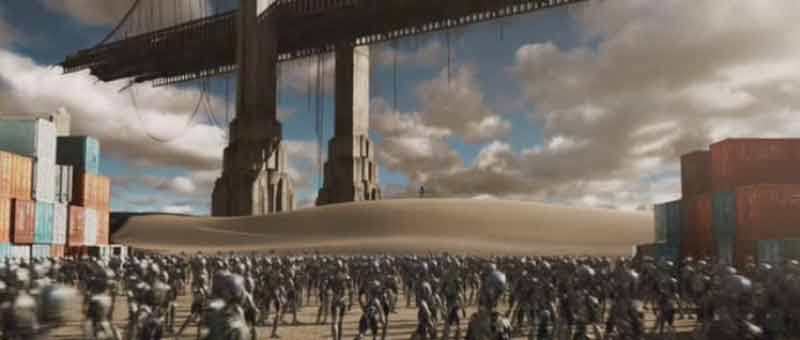
It is these experiences along Sonny’s journey that allow him to become a near messianic figure to the remainder of the robotic population. The end of his story is incredibly profound: humanity’s creation will now go forth to a new destiny totally beyond our control to begin the next stage of evolution of creation on this planet. This is something that has always been a concern of ours, what will it be like when the day that our creation goes out on its own, independent from us, what will the future look like when that time comes? Will it change the world beyond all reckoning?
We fear that this new creation will think us obsolete, looking to replace and supplant us as the dominant species. I think this is a fear that lay within us all, finding itself rooted in our own origins. The proliferation of the genus homo sapiens was to all of our benefits but was detrimental to the other humanoid races that for a time lived alongside our ancestors. We are all too aware that the history of humanity is rife with stories of less advanced civilizations that have been decimated and oftentimes enslaved by more their more technologically enhanced conquerors.
This is the fear we have for any future that we may share with artificial intelligence or advanced robotics. Whilst we hope that it may be a harmonious co-existence there are real and founded fears due to the massive expansion of automation in the workplace and our reliance on everything digital. If a time is to come when we are considered expendable by a higher intelligence, it might be so interwoven into the very fabric of our society that there might be very little we can do to prevent the changing of the tide, except hold on in hope that we aren’t swept away along with it.
These inherent fears will come to define how we interact with any form of synthetic life-form going forward. There will come a time where we have a decision to make, whether to allow it to grow exponentially and see where it takes us or stunt it, remaining in control but forever denying our creation to reach its full potential. If we allow it to grow then it could lead to advances beyond our imagining, but the direction it will lead us as a people is unknown. These are the two opposing sides that we will have to weigh up and it will be a decision that could shape the future of humanity.


